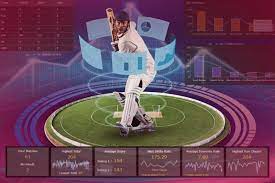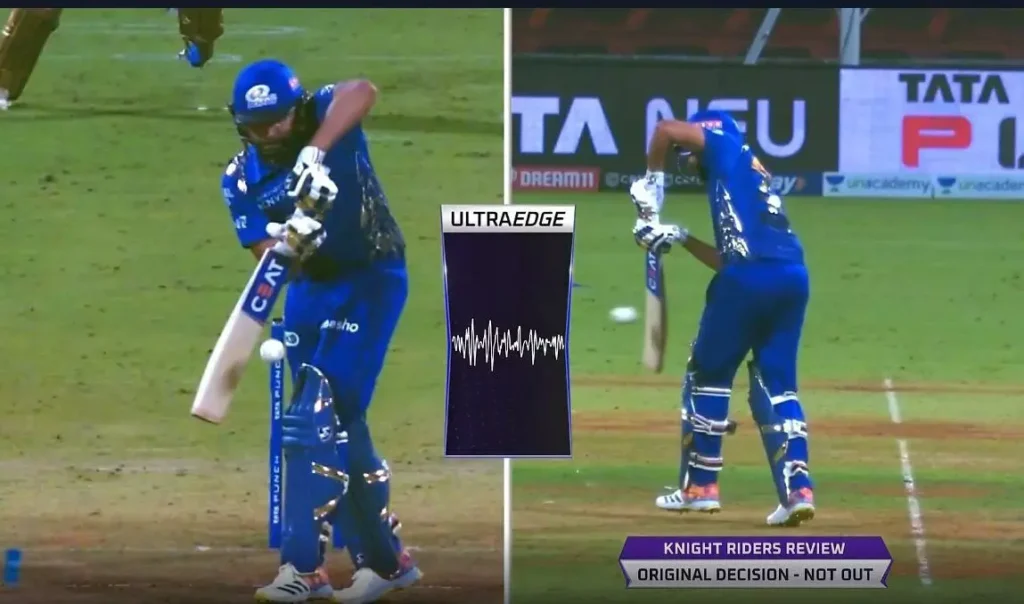The Indian Premier League (IPL) has always been at the forefront of integrating cutting-edge technology in cricket. The 2024 season marks a significant milestone with the introduction of the Smart Replay System, leveraging Hawk-Eye technology to revolutionize umpiring decisions. This system is designed to enhance decision-making accuracy, speed, and transparency, which is set to improve the overall quality of the game and viewer experience.
Key Takeaways
- The Smart Replay System in IPL 2024 represents a technological leap, promising more accurate and prompt umpiring decisions.
- Hawk-Eye and UltraEdge technologies are now central to officiating, impacting LBW calls and edge detection with high precision.
- DRS in IPL now includes allocation of two unsuccessful reviews per team per innings, with expanded applications for wides and no balls.
- Viewer engagement is set to increase with live broadcasts of umpiring discussions, enhancing transparency and trust in decisions.
- Collaboration between TV umpires and Hawk-Eye operators is streamlined, leading to improved decision accuracy and reduced delays.
The Advent of Smart Replay System in IPL 2024

Overview of the Smart Replay System
The Smart Replay System introduced in IPL 2024 represents a significant leap in cricket technology, aimed at enhancing the accuracy and speed of umpiring decisions. This system integrates multiple high-speed cameras and advanced ball-tracking technology to provide a comprehensive suite of visuals for the TV umpire.
Key features of the Smart Replay System include split-screen visuals, which offer the umpire various angles and perspectives, crucial for dissecting pivotal moments in the game. Additionally, the system facilitates a more transparent umpiring process by broadcasting live discussions between the TV umpire and the Hawk-Eye operators, thus engaging viewers in the decision-making process.
The Smart Replay System’s focus on ball tracking, especially when the ball pitches outside the leg stump, streamlines lbw reviews, thereby enhancing the overall accuracy of decisions.
With the introduction of this system, the IPL underscores its commitment to leveraging technological advancements for the improvement of the sport, promising a more dynamic and immersive experience for cricket enthusiasts.
Enhancements in Umpiring Decision-Making
The introduction of the Smart Replay System in IPL 2024 is set to revolutionize the precision of umpiring decisions. With the integration of advanced Hawk-Eye technology, umpires will now have access to a plethora of visual aids that were previously unavailable. This includes the ability to view synchronized footage on a split screen, which is crucial for making accurate calls during contentious moments on the field.
The system’s capability to provide split-screen images ensures that every angle is covered, allowing for a comprehensive review of the play.
For instance, in scenarios involving overthrows, the Smart Replay System can ascertain whether the batters had crossed before the ball was thrown. This level of detail addresses issues like those seen in the 2019 World Cup final, enhancing the fairness of the game. Moreover, the system’s integration extends to stumpings, run-outs, catches, and overthrows, equipping the TV umpire with more precise visuals for decision-making.
The process is straightforward: upon a contentious situation, the third umpire reviews the incident using instant slow-motion replays, ball-tracking, and UltraEdge when necessary. The on-field umpire’s decision is then confirmed or overturned based on this meticulous examination.
Collaboration Between TV Umpire and Hawk-Eye Operators
The introduction of the Smart Replay System in IPL 2024 marks a significant shift in how TV umpires and Hawk-Eye operators collaborate. The TV umpire will now directly receive inputs from the Hawk-Eye operators, eliminating the need for a broadcast director intermediary. This change promises to enhance the speed and accuracy of decisions, particularly for stumping and close catch calls.
The new system allows for the display of a single frame that combines both side-on and front-on views, giving the TV umpire a comprehensive perspective. The option to select specific zoom angles further empowers the umpire to make more informed decisions.
One of the most anticipated features is the live airing of conversations between the TV umpire and the Hawk-Eye operators. This transparency is expected to provide viewers with a clearer understanding of the decision-making process. The IPL’s adoption of this system follows a successful trial by the ECB in The Hundred competition.
The table below outlines the key enhancements to the umpire-operator collaboration under the Smart Replay System:
| Feature | Description |
|---|---|
| Direct Communication | TV umpire receives visuals directly from Hawk-Eye operators. |
| Split-Screen Views | Operators provide split screens for stumping and close catch calls. |
| Instant Single Frame | Combined side-on and front-on views displayed instantly. |
| Live Conversations | Umpire and operator discussions aired live for viewer insight. |
Technological Innovations in Cricket Officiating

The Role of Hawk-Eye and UltraEdge
The Indian Premier League’s commitment to accuracy and speed in umpiring decisions has been significantly bolstered by the integration of Hawk-Eye and UltraEdge technologies. These systems have revolutionized the way on-field events are monitored and reviewed.
Hawk-Eye, with its high-speed cameras and sophisticated software, provides precise ball tracking information, which is crucial for adjudicating LBW decisions. UltraEdge, on the other hand, is instrumental in detecting the faintest of edges, ensuring that snicks and nicks do not go unnoticed.
The synergy between Hawk-Eye and UltraEdge has enhanced the clarity and reliability of decisions, reducing the margin of error and increasing the confidence of players, umpires, and fans alike.
The deployment of these technologies is not just limited to LBWs and edges. With the advent of the Smart Replay System, their scope has expanded to include stumpings, run-outs, catches, and overthrows. This comprehensive coverage ensures that almost every aspect of the game is under technological scrutiny.
Here is a breakdown of the Hawk-Eye camera setup in IPL matches:
- Eight Hawk-Eye cameras are deployed per match.
- Two cameras are positioned on each side of the square leg.
- Two cameras are placed along the straight boundary on each side of the pitch.
This extensive camera network captures a multitude of angles, providing the TV umpire with a robust visual toolkit for making informed decisions.
Impact on LBW Calls and Edge Detection
The Decision Review System (DRS) has significantly improved the accuracy of LBW calls and edge detection in cricket. With the advent of Hawk-Eye and UltraEdge technologies, umpires now have access to more precise information when making these critical decisions.
The process for LBW reviews has been streamlined, saving valuable time during matches. Hawk-Eye operators assist umpires by pre-empting certain steps, such as checking for a front-arm spin vision and UltraEdge, before moving on to ball tracking. This collaboration has led to a reduction in unnecessary review steps.
| Technology | Function | Impact on LBW and Edge Detection |
|---|---|---|
| Hawk-Eye | Ball tracking | Predicts the accurate path of the ball |
| UltraEdge | Sound detection | Identifies contact between ball and bat |
The integration of these technologies ensures that contentious decisions, such as overthrows and whether batters have crossed before the ball is released, are resolved with greater certainty, enhancing the game’s integrity.
The use of eight Hawk-Eye cameras around the field provides comprehensive coverage for all types of on-field referrals, including stumpings, run-outs, catches, and overthrows. This advanced camera integration offers TV umpires enhanced visuals, leading to more accurate and swift decision-making.
Visual Analytics and Advanced Camera Integration
The integration of visual analytics and advanced camera technology has revolutionized the way umpires make decisions in cricket. The Smart Replay System, with its split-screen and tri-vision capabilities, ensures a comprehensive analysis of contentious moments. Umpires now have access to synchronized film on split screens, allowing them to view all relevant frames simultaneously for a more informed decision-making process.
The Smart Replay System’s collaboration with Hawk-Eye has led to the inclusion of eight high-speed cameras, providing ultra-precise visuals for lbw reviews, stumpings, run-outs, and catches. This system not only improves the accuracy of decisions but also the speed at which they are made, reducing the interruption to the flow of the game.
The live airing of conversations between the TV umpire and Hawk-Eye operators offers an unprecedented level of transparency, giving viewers a better understanding of the reasoning behind judgments.
The following table summarizes the key enhancements brought by the Smart Replay System:
| Feature | Description |
|---|---|
| Split-Screen | Synchronized film of all pertinent frames |
| Tri-Vision Footage | Side-on and front-on angles for stumping and catch referrals |
| High-Speed Cameras | Eight cameras for accurate ball tracking and edge detection |
| Live Conversations | Insight into umpire and Hawk-Eye operator discussions |
The advancements in camera technology and visual analytics are a testament to the positive impact of technology on sports like cricket, where the DRS has brought greater accuracy and fairness to umpiring decisions.
Understanding the Decision Review System (DRS) in IPL

Allocation of Unsuccessful Reviews per Team
In the dynamic arena of T20 cricket, the Decision Review System (DRS) plays a pivotal role in ensuring fair play. Each team is granted two unsuccessful reviews per innings, a rule that balances the pursuit of justice with the need to avoid frivolous challenges. This allocation is consistent across both batting and fielding phases, ensuring uniformity in the application of technology-assisted decisions.
The strategic use of these reviews can often be the difference between victory and defeat. Teams must judiciously decide when to employ this crucial tool, as an unsuccessful review can leave them vulnerable to umpiring errors for the remainder of the innings. The table below succinctly captures the review allocation:
| Match Format | Reviews per Innings |
|---|---|
| T20 (IPL) | 2 |
| ODI | 2 |
| Test | 3 |
The integration of technology in cricket officiating has not only enhanced the accuracy of decisions but also added a layer of strategic depth to the game. Teams now have to weigh the potential impact of each review on the game’s outcome, making DRS a game-changer in the truest sense.
Application of DRS for Wides and No Balls
The Indian Premier League (IPL) 2024 has introduced a significant change in the Decision Review System (DRS), allowing players to challenge on-field calls for wides and no-balls. This expansion of DRS adds a new dimension to the game, providing teams with the opportunity to overturn potentially game-changing decisions.
With the integration of this rule, the accuracy of wides and no-ball decisions is expected to improve, reducing the margin of error and ensuring fair play.
Each team is allocated two unsuccessful reviews per innings, which now can be used to contest these critical calls. The TV umpire, equipped with UltraEdge and HawkEye technologies, plays a pivotal role in reviewing these contested decisions, ensuring that the correct call is made with the help of advanced ball-tracking and edge detection systems.
This table summarizes the DRS usage for wides and no-balls:
| DRS Application | Description |
|---|---|
| Wides | Players can now review on-field wide calls. |
| No Balls | On-field no-ball decisions can also be challenged. |
The implementation of these rules is a testament to the evolving nature of cricket officiating, where technology continues to enhance the decision-making process and uphold the integrity of the sport.
The Inclusion of Hawk-Eye Cameras in DRS
The integration of Hawk-Eye cameras into the Decision Review System (DRS) has been a game-changer for the Indian Premier League (IPL). With the advent of IPL 2024, the role of these cameras has expanded beyond their traditional use for ball tracking and UltraEdge. Now, every game is equipped with eight Hawk-Eye cameras, ensuring comprehensive coverage of the field.
The direct communication between the TV umpire and Hawk-Eye operators via high-speed cameras has significantly streamlined the decision-making process.
This technological leap allows for more precise visuals, aiding the TV umpire in making informed decisions on stumpings, run-outs, catches, and overthrows. The system’s capability to determine if batters had crossed before the ball was released is particularly crucial in resolving contentious situations, reminiscent of the 2019 World Cup final incident.
Viewer Engagement and Umpiring Transparency

Live Broadcast of Umpiring Discussions
The integration of live broadcasts of umpiring discussions marks a significant shift towards greater transparency in cricket officiating. Viewers will now have the unique opportunity to hear the deliberations between the TV umpire and the Hawk-Eye operators as they occur. This initiative aims to demystify the decision-making process and provide fans with a deeper understanding of the nuances involved in critical calls.
The live airing of these discussions is expected to enhance the viewer’s experience by revealing the intricate considerations and expertise that underpin each decision.
The direct communication between the TV umpire and Hawk-Eye operators, without the intermediary role of a broadcast director, promises to streamline the review process. This change is anticipated to result in swifter and more accurate decisions, as the umpire can receive real-time inputs and utilize advanced visual aids like split screens for stumping and close catch calls.
Another aspect of this technological advancement is the potential reduction in time taken for LBW reviews. By eliminating unnecessary steps and allowing Hawk-Eye operators to assist umpires more directly, the review system becomes more efficient. The Indian board’s proactive approach, including a two-day workshop for selected umpires, underscores the commitment to ensuring that the officials are well-prepared to work with the new system.
Improved Decision Accuracy and Speed
The integration of advanced technologies in cricket has led to a remarkable improvement in the accuracy and speed of umpiring decisions. The Smart Replay System, in particular, has been pivotal in this transformation, ensuring that decisions are not only made swiftly but also with a higher degree of precision. This system leverages the capabilities of high-speed Hawk-Eye cameras and direct input from operators to the TV umpire, which has been instrumental in reducing the margin for error in critical decisions.
With the Smart Replay System, the IPL is setting a new benchmark for cricket officiating, where the emphasis is on both the quality and the expediency of decisions.
The table below illustrates the impact of the Smart Replay System on decision-making in IPL 2024:
| Aspect | Before Smart Replay | With Smart Replay |
|---|---|---|
| Speed | Moderate | Fast |
| Accuracy | High | Very High |
This technology not only benefits the umpires and players but also enhances the viewing experience for fans, who can now witness the most accurate decisions being made in real-time.
Public Perception and Trust in Technological Aids
The integration of advanced technologies in cricket has not only revolutionized the game but also significantly influenced public perception. Trust in umpiring decisions has seen a marked improvement, as technological aids provide a transparent and objective basis for calls made on the field. This transparency is crucial in maintaining the integrity of the game and ensuring that the spirit of cricket is upheld.
The following points highlight the impact of technology on public trust:
- Enhanced accuracy in decision-making reinforces the credibility of the game.
- Real-time visual analytics allow audiences to understand and appreciate the complexity of umpiring decisions.
- The ability to review and overturn incorrect decisions has led to a more just and fair competition.
The consistent application of technology in cricket officiating has not only streamlined the decision-making process but also fortified the relationship between the sport and its enthusiasts.
As the IPL continues to embrace innovations like the Smart Replay System, the role of technology in cricket is set to expand further. The evolution of cricket into what some are calling ‘Cricket 5.0’ is indicative of a future where artificial intelligence and machine learning will play an even greater role in shaping the sport.
Conclusion
The integration of ultra-edge technology such as the Smart Replay System into the IPL marks a transformative era in cricket officiating. With the synergy of Hawk-Eye cameras and UltraEdge, umpires are now equipped with more precise and comprehensive tools to make informed decisions, enhancing the accuracy and speed of the adjudication process. This technological leap not only bolsters the integrity of the game but also enriches the viewing experience for fans worldwide. As we look forward to IPL 2024 and beyond, it is clear that the fusion of advanced technology and sports will continue to evolve, setting new benchmarks for fairness and engagement in cricket.
Frequently Asked Questions
What is the Smart Replay System in IPL 2024?
The Smart Replay System is a new technological advancement in IPL 2024 that integrates Hawk-Eye technology to enhance umpiring decisions. It provides direct input to the TV umpire and allows live broadcast of umpiring discussions, aiming to improve decision accuracy and speed.
How does the Smart Replay System improve umpiring decisions?
The system leverages advanced visual analytics, including more split screens and better frame rates, to provide comprehensive evidence for umpiring decisions. It also facilitates smoother collaboration between the TV umpire and Hawk-Eye operators by sharing a workspace.
How many unsuccessful reviews are allowed per team in IPL matches?
Each team is allowed two unsuccessful reviews per innings in IPL matches. Teams have two reviews when fielding and two when batting, with the TV umpire using UltraEdge and HawkEye technologies for edge detection and ball tracking.
Can the Decision Review System (DRS) be used for wides and no balls in IPL?
Yes, the DRS can be used to challenge calls for wides and no balls in IPL, providing teams with the opportunity to contest these decisions using technological aids.
How many Hawk-Eye cameras are used in each IPL match?
There are eight Hawk-Eye cameras used in each IPL match—two on each side of the square leg and two along the straight boundary on each side of the pitch. These cameras assist in ball tracking and UltraEdge for on-field referrals.
What impact does technology have on viewer engagement and umpiring transparency?
The use of technology, such as the Smart Replay System, enhances viewer engagement by broadcasting live umpiring discussions and improves umpiring transparency by providing clear visual evidence for decisions, thus increasing public trust in technological aids.







